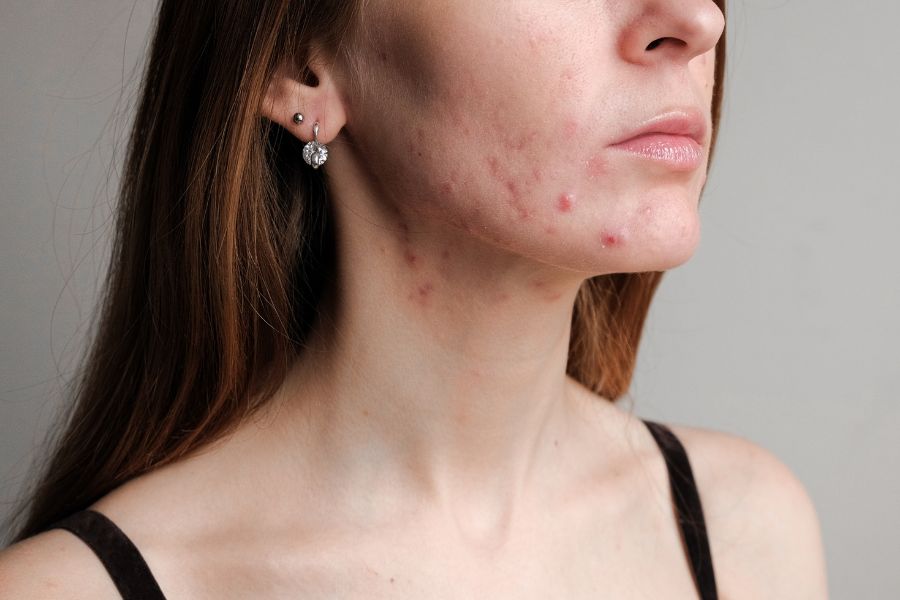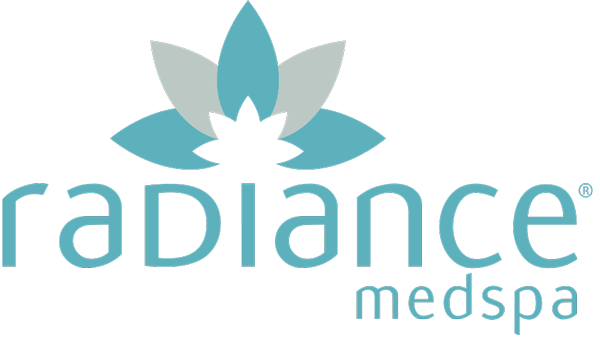![]() By Baze Mpinja for Allure, published Mar 20, 2023. Read Original Article here.
By Baze Mpinja for Allure, published Mar 20, 2023. Read Original Article here.
When I began my career as a beauty editor and writer nearly two decades ago, I quickly decided that skin care was my favorite topic. As an industry newbie, there was so much to learn about – breakthrough ingredients, skin conditions, and the latest cosmetic treatments. I found it all fascinating, yet over time I realized something: A lot of the sought-after, noninvasive procedures were off-limits for those of us with brown skin. I remember sitting at press events for things such as new lasers and it felt like being invited to a restaurant only to find there was nothing I could eat. I didn't learn the reasons why until years later: Aesthetics companies weren't prioritizing testing and research for dark complexions.

Whether the motivation is money, optics, or the realization that people of all shades want to improve their skin (or a combo of all three), the industry has made significant progress. "Without a doubt, cosmetic dermatology has become more inclusive in the past few decades. This is the case not only when it comes to advertising, but also regarding technological advances and research," says Kim Nichols, MD, a board-certified dermatologist in Greenwich, Connecticut, but, she adds, more education (such as webinars and hands-on training on darker complexions) in the aesthetics industry is still needed. "There is still a disparity in the field," agrees Ava Shamban, MD, a board-certified dermatologist in Los Angeles. "But over the past 15 years, I have seen more people of color engaged in the testing processes, clinical trial research, and post-approval market testing." (She's referring to studies on how well a treatment works that are conducted after it's received FDA approval.) "We are also seeing brands and companies address skin differences," continues Dr. Shamban. "Safety data and the knowledge of facial aging patterns in skin-of-color patients will minimize adverse outcomes like skin burning, permanent discoloration, post-inflammatory hyperpigmentation, and scar formation." She notes that tech developments such as insulated tips on energy-powered devices, more uniform energy delivery, and photo mapping of the skin's deeper layers allow for safer and more controlled delivery of heat in procedures like skin-tightening-and-smoothing radiofrequency treatments, which reduces the risk of harm. "While [the industry's efforts are] not enough, we have come a long way in addressing the broader range of skin types and tones," she says. And that's great news because investing more in skin of color will lead to better aesthetic results. "If you don't address the patient population, [including] how populations age differently, you may not use the right approach or product [for treating each patient]," says Dr. Shamban. In other words: An increase in knowledge about skin of color translates to more inclusive treatments.
For more proof that the pharmaceutical and medical device landscape is finally moving in the right direction, one can simply look at the latest launches. "Most of the new procedures from injectables to acne-treating lasers that have come out in the last few years are colorblind and safe and effective in all skin types, including dark complexions. So that's a win," says Corey L. Hartman, MD, a board-certified dermatologist in Birmingham, Alabama. "We don't have to have those dire warnings [on the latest procedures] anymore." In the past, too many energy-powered devices, including hair removal lasers and ones for zapping away hyperpigmentation, came with serious risks like scarring, burns, and discoloration for dark skin tones. Just this month, reports of significant discoloration from Intense Pulse Light (IPL) treatments for hyperpigmentation have been making the rounds on social. (The risk is greater if an untrained technician chooses the wrong settings for deep skin tones, so you always want to get energy-powered procedures from a board-certified dermatologist or plastic surgeon, never a medspa — but more on that in a sec. You can check a doctor's credentials at certificationmatters.org.)
Here, we're spotlighting three new melanin-friendly treatments that are generating buzz. But before you book one, remember that although the market has evolved, a skilled practitioner is a must. Be sure to go to doctors who have experience performing cosmetic procedures on brown skin. Dr. Hartman suggests asking the dermatologist if they've worked with a diverse range of patients and also checking them out online. "Look at the staff [to see how diverse they are] and review before-and-after photos to ensure that the results are consistent across ethnicities," he says. "Social media and the practice's website can give great insight into the types of patients a dermatologist treats before you even set foot in the office."
AviClear: An acne-blasting laser for dark skin
Finally, "technology companies have advanced treatment options [like lasers] for the broader audience," says Paul Jarrod Frank, MD, a board-certified dermatologist in New York City. "One of the greatest advances we've seen in the last 10 years is in testing of darker skin types, which stereotypically would be considered higher risk because of the susceptibility to hyperpigmentation caused by heat and trauma. Now we have much safer devices that can be used to accommodate dark skin." AviClear, a new laser designed to treat stubborn acne, is one example of a new device that's universally safe. "It's the closest that you can get to an Accutane result without taking an oral medication," says Dr. Hartman. (Accutane is controversial because, while it can stop acne, it may come with side effects such as dry mouth, dry eyes, dry skin, and risks including severe birth defects if you become pregnant.)
AviClear is a game-changer because of the way it works to target acne without damaging the skin. Typical acne-focused lasers address inflammation and scarring associated with breakouts by using thermal energy to stimulate collagen or light energy to target excess pigment, both of which can cause heat-induced trauma on dark skin. But AviClear gets to the root cause of acne by targeting the sebaceous glands (with a nonablative 1726 nanometer wavelength laser) and zapping their excess oil. Since AviClear's wavelength is absorbed only by the glands and doesn't affect the skin’s pigment at all, "it's the first FDA-approved device that can treat all types of active acne, including comedonal [small bumps], pustules [pus-filled lesions], and cystic [painful red bumps], across all skin tones," says Dr. Nichols.
Three monthly sessions are required and although they usually take less than an hour, there is some pain involved, as is the case with most lasers. When a doctor is gliding AviClear over your skin, it feels like "a slight rubber band snap," explains Dr. Shamban. However, the discomfort (and temporary mild redness during recovery) comes with a big payoff: Clear skin for up to two years. Results like that aren’t cheap. AviClear isn't covered by insurance, so expect to pay around $4,500 for three treatments. Your sticker shock will vary depending on where you live.
Get Started!
Schedule your complimentary consultation today!
Vivace Ultra: Radiofrequency (RF) microneedling for dark skin
If texture-related issues like acne scars, fine lines, wrinkles, and stretch marks are bugging you, Vivace Ultra could be your skin savior. It's a radiofrequency microneedling device — and it's a tech upgrade from traditional ones, which harness the power of radio frequency (thermal energy that induces damage to the skin) and tiny needles (to puncture the skin at various depths). Like its predecessors, this device kick-starts the skin's natural repair response to promote collagen production for a smoother, tighter look. According to Dr. Shamban, "RF microneedling is generally a colorblind treatment. Unlike many other energy-based devices, it is not using heat, light, or any energy wavelength that is chromophore-dependent or targets melanin in the skin. Therefore, when it's used correctly by an experienced provider, it's safe for patients of all types of mixed ethnicities and the darkest tones on the Fitzpatrick scale." But Vivace Ultra is the first RF microneedling device to also include ultrasound imaging and mapping, which could mean the results are more precise: "Vivace Ultra has the unique capability to visualize, through ultrasound guidance, the layers of skin one is targeting," says Dr. Frank. This detailed view allows doctors to tailor the needle depth to a patient's skin – and if you need to adjust the needle to meet a specific goal – smoothing acne scars or tightening the neck, for example — or to avoid a bad outcome — like heat-induced hyperpigmentation — the personalized depth measurements Vivace Ultra provides make it less of a guessing game. The bespoke approach delivers better results. "What is also unique about it is its ability to treat various skin types, including darker ones. We can deliver the energy deeper in the skin while minimizing trauma to the epidermis [that can cause hyperpigmentation]," says Dr. Frank. Depending on the treatment area, a Vivace Ultra session can take 15 to 30 minutes, not including the numbing process, which lasts 45 minutes to an hour. Even though a bunch of ultrafine needles are involved, Vivace Ultra (which received FDA approval in October 2022) has minimal side effects. A little swelling and redness for one to three days afterwards is the norm. Some people say radiofrequency microneedling is surprisingly painless; others say it hurts like crazy (ask your doctor if they use numbing cream, which can help a lot). As for the cost, prepare yourself. It'll break the bank even more than Beyoncé tickets. Treatments can run $1,000 to $3,000 each and you might need up to four appointments to see a noticeable improvement in skin texture (results vary depending on factors like age and the condition of the skin, with some patients needing six treatments, according to recent clinical studies).
Resilient Hyaluronic Acid: The latest filler for laugh lines
"A common misconception that I still hear is that darker skin doesn't age. While [deep complexions] may not experience the same fine lines and wrinkles forming that lighter counterparts do, age begins to show in loss of volume," says Dr. Nichols. We're all born with hyaluronic acid in our skin. It's what keeps our complexions hydrated, smooth, and plump. The more candles you have on your birthday cake, the more the natural production process slows down. Fillers can help with that and, fortunately, dermatologists are standing by with their syringes. The new filler that dermatologists are raving about is called Resilient Hyaluronic Acid or RHA. It was first introduced in the US in 2020, but is still available only in select dermatologists' offices. (Revance, the company that manufactures the line, hasn't confirmed when it will be more widely available as of press time. You can search the practice locator on Revance's site to see if a dermatologist near you offers RHA.)
RHA comes in different preparations (RHA 2, RHA 3, RHA 4, and RHA Redensity). "The numbered categories indicate features such as its thickness and malleability. Doctors can mix and match and use them like an artist’s palette to create the combo that’s going to give the best results for a client's needs," says Dr. Hartman.
One reason dermatologists are so excited about RHA is that it's a standout for its hard-to-detect results, a welcome change from all the overdone filler out there. It has a stretchy quality that allows it to move with your facial expressions, so it looks natural whether your face is at rest or you're flashing your brightest smile. "RHA is formulated to mimic true hyaluronic acid created in the body, more so than other hyaluronic acid-based fillers," says Dr. Nichols. "I personally love how effortlessly it blends and contours the face. It is especially great for simultaneously adding natural volume and smoothing fine lines." As for the side effects, they're low. Patients might experience two to five days of barely there swelling. And, according to clinical trials, darker skinned patients are less likely to experience treatment-related adverse events (such as mild to moderate lumps and bumps under the skin, which resolved on their own in the trials, and bruising at the injection site) than those with light skin. "In practice, not just in the trials, I have seen fantastic results, particularly on patients of color," says Dr. Shamban, who was an FDA clinical trial investigator for RHA. The trials focused on the midface, where there's a lot of movement and expression, and were conducted on all skin tones. Dr. Shamban's patients in the trials included the darkest complexions on the Fitzpatrick scale, categories V and VI. "Patients of color often do not have as many visible fine lines and wrinkles as their Caucasian counterparts, but they may have deeper lines, creases, and folds in areas such as the nasolabial folds. A product like the RHA collection is an ideal choice because it integrates and basically 'stretches' and bounces back with movement in dynamic areas of the face," explains Dr. Shamban.
When I tried it, I could see the results right away. The grooves around my mouth were no longer prominent and my cheek area appeared more lifted, fuller, and youthful. My friend and my sister, who saw me right after the treatment, said I looked "refreshed." And both of them wouldn't hesitate to call me out if I had headed into puffy-face territory. The only thing that disappointed me about RHA? Its longevity. Revance says it can last up to 15 months, but after six months, my nasolabial folds needed a re-up.

